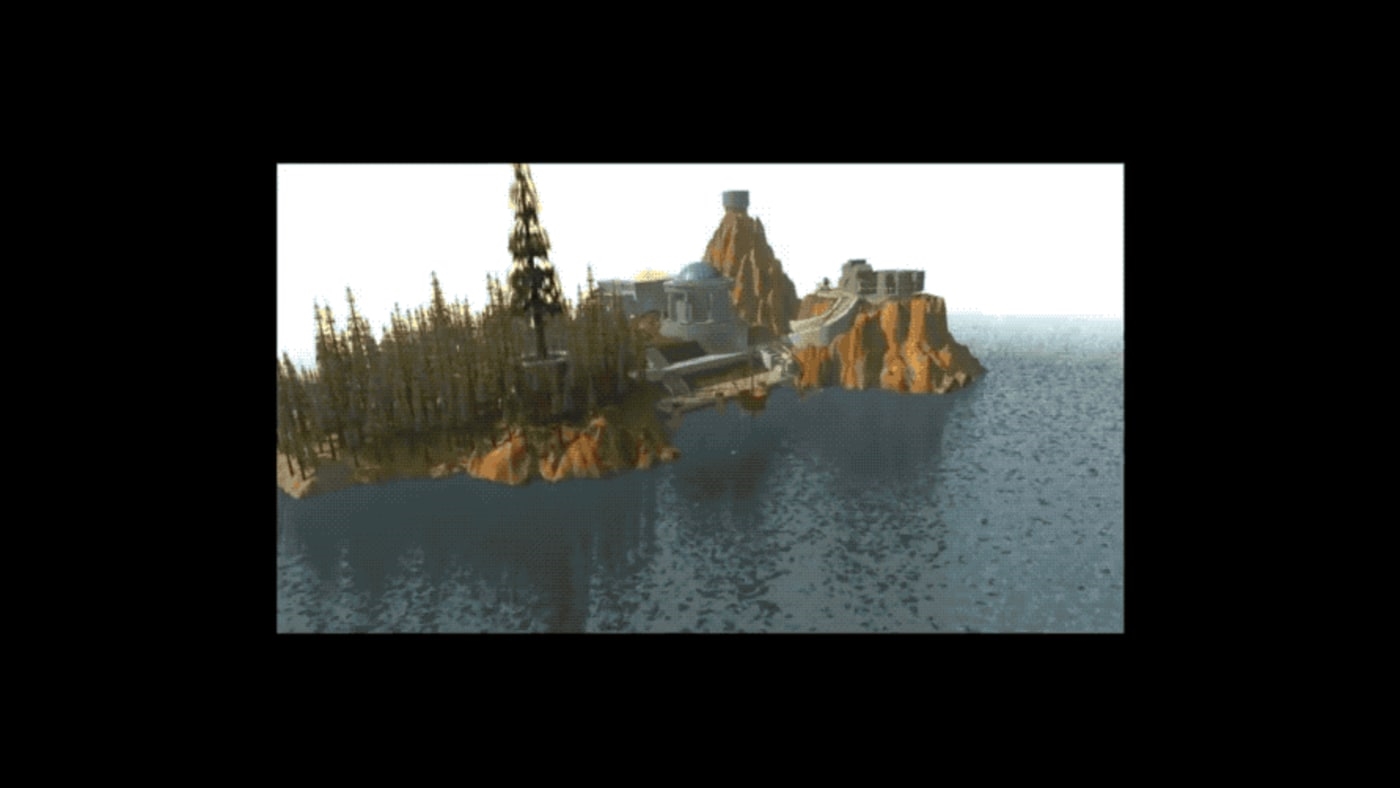“Myst” at 25: How it changed gaming, created addicts, and made enemies
Just a few days ago, as Hurricane Florence approached my home in North Carolina, I popped a disc into my 1990s Atari Jaguar CD gaming console. A familiar animated logo popped onto the screen, and I found myself transported back to a world I knew well decades ago.
It was Myst, the groundbreaking point-and-click adventure game that Brøderbund published in its first incarnation–for the Mac–25 years ago today, on September 24, 1993. I personally happened to have first played Myst on the most obscure platform possible, the Jaguar, but that made it no less of a transformational experience at the time.
In Myst, you explore an ornately detailed island that leads to other vaguely Victorian sci-fi worlds (called ages) created by a character named Atrus. You’re presented with lushly detailed screens—punctuated by animations—depicting the scene around you, and can point and click your way through puzzles that feel woven perfectly into the tapestry of the game. Despite its largely static nature, its groundbreaking pre-rendered visuals (which many people called photorealistic at the time) made Myst feel like the first convincing virtual reality experience, at least in the sense of feeling physically present in a fictional world.
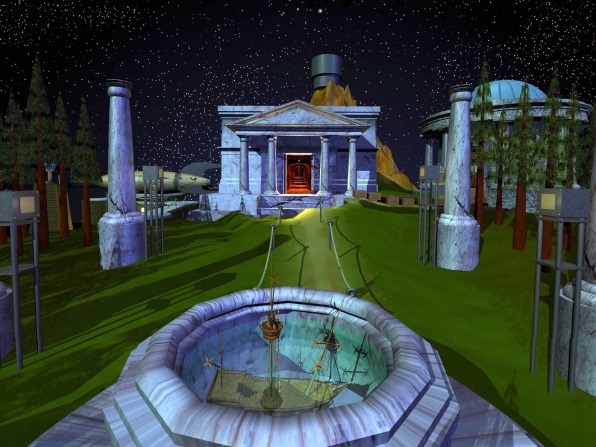
[Image: Cyan Worlds, Inc.]
I invited my daughters, aged 6 and 8, to join me in exploring the lush alien world while the rains encircled our house. They took copious illustrated notes and offered suggestions as we played. Despite growing up with much flashier animated graphics, they were still sucked in by the classic world of Myst. As we collaborated over puzzles played out on vintage machinery, my older daughter said, “People back then must have been incredibly creative to make something like this.”
Indeed they were.
The creators of Myst, brothers Rand and Robyn Miller, along with a small team at their Washington state-based firm Cyan, were no strangers to innovation. The company had previously developed the first-ever game released on CD-ROM for a personal computer (in this case, a Macintosh), The Manhole, in 1989. They followed that children’s title with other whimsical point-and-click words crafted in HyperCard, Apple’s Mac-based hypertext environment that presaged the World Wide Web. Creativity came naturally to the Millers, and Myst was the natural next step in the refinement of their art.
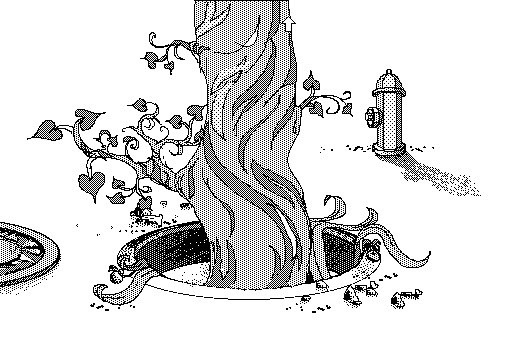
[Image: Cyan Worlds, Inc.]
Even 25 years later, the emergence of Myst still represents a watershed moment in the development of computer video games. It’s an achievement on par, I think, with the launch of Pong, Super Mario Bros., and Tetris. Myst expanded the art form, expanded the market, and challenged assumptions. It also made a lot of people happy.
Like most classic works, Myst has proven commercially timeless. After the Mac launch in September 1993, an IBM PC version launched the following February, and the game’s popularity quickly spread by word of mouth. Within a year, glowing reviews of the title began appearing in mainstream newspapers, and Myst’s sales skyrocketed, making it a high-profile success.
Since then, the game has appeared on at least 12 different platforms, most recently including iOS and Nintendo 3DS. Across all releases, consumers have purchased Myst over 6 million times; for several years it held the title of highest-selling PC game of all time (until the equally groundbreaking The Sims came along). Over the dozen years following its release, it also inspired four sequels. And last May, Cyan completed a Myst 25th anniversary Kickstarter campaign with more than $2.8 million in crowdfunded proceeds.
Beloved–to a point
Despite Myst’s enduring popularity, its reputation is surprisingly mixed for such an iconic game. At launch, people immediately loved it. Just search the Usenet archives over on Google, and you’ll find players who enjoyed it so much that when the game crashed repeatedly on their Macs they kept on plowing through it, soaking in every second of the experience. Reviewers for major newspapers and magazines cited Myst as evidence that computer gaming had finally attained artistic maturity.
The traditional gaming press was not as easily swayed, and some editorials derided the title for its simplicity and lack of action. (“Finally attained?” I can imagine them asking in their heads; they considered computer games an artform form all along.)
Often, the needling of Myst gets far more specific. In my years of reporting on the history of electronic games, I have encountered more than one industry developer who has blamed Myst for the death of everything they loved about adventure games in the early 1990s.
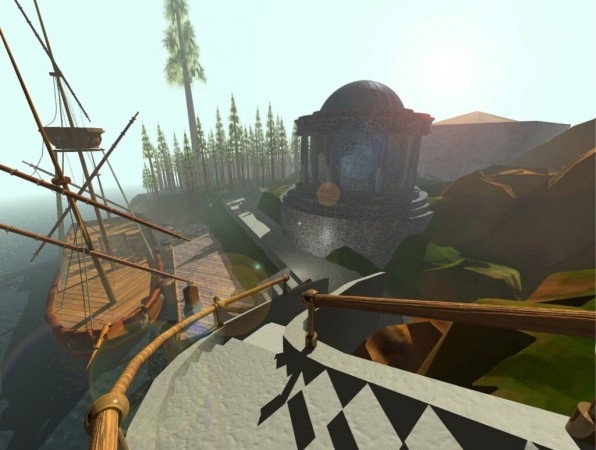
While developing a list of the “Ten Greatest PC Games Ever” for PCWorld back in 2009, I sought a quote from a famous game developer for just about every game included. When I looked around for a developer willing to praise Myst, I found none. In fact, Al Lowe, creator of Sierra’s classic graphical adventure game Leisure Suit Larry (1987), went out of his way to explain why he didn’t like it.
“I never understood the excitement about Myst,” Lowe told me. “There were always many other games that were more interesting, exciting, subtle and funny, with better logic and puzzles. I grew to resent its success while better games struggled for recognition.”
It’s true that adventure titles developed by people like Lowe suffered for attention while Myst soaked up the limelight. That must have been very difficult to accept for companies like Sierra, which had a proven formula for adventure games in franchises such as Leisure Suit Larry and King’s Quest. Suddenly, that approach wasn’t so hot anymore.
Prior to Myst, if you said “adventure game,” a PC owner might see images of a title from that firm or LucasArts, another company that crafted some of the most well-respected adventure titles of the ’80s and ’90s. Think Monkey’s Island or Indiana Jones and the Fate of Atlantis: third-person view, inventory, copious dialog (often funny), lots of characters, constant peril, verb-based interface. Myst did away with all of that. It was Spartan, lonely, calm, and low-stakes.
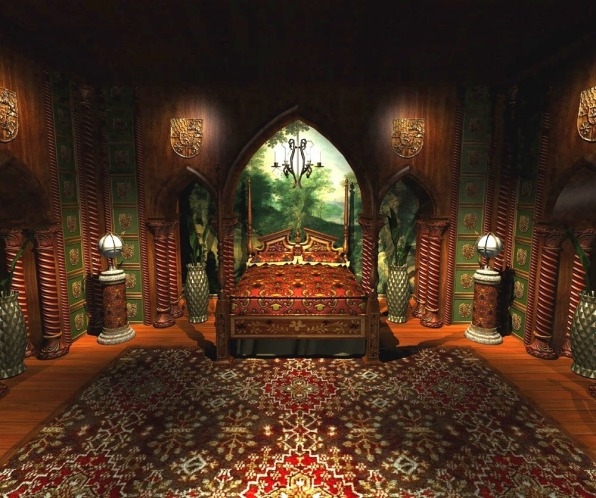
Along with violating the existing rules of adventure games, Myst was also the ultimate anti-arcade game. Everything gaming had taught itself to be since 1972 was thrown out the window. There were no lives, no dying, no score, and no time limit. No physical agility or reflexes were required. The only pressure was that which you imposed upon yourself to solve the puzzles and complete the storyline.
For a game so seemingly simple, Myst was astonishingly hard to copy. After it became wildly successful, it was not long before other developers tried to replicate Cyan’s recipe. In general, they failed, and many Myst-like adventure games suffered poorly at the hands of reviewers.
Agustín Cordes, the creator of one of my favorite adventure games, 2006’s Scratches, sometimes tangles with me about Myst on Twitter. He admits it was important, but still laments its impact on the adventure game market. “I do believe the overwhelming saturation of Myst clones led to an adventure game fatigue,” he says. “It didn’t help they were so shamefully similar to each other, featuring sterile worlds, obscure puzzles based on trial and error, and close to no narrative design.”
Tim Schafer, a veteran game designer responsible for LucasArts classics such as Day of the Tentacle and Grim Fandango, says that he never saw Myst as a threat to LucasArts’ way of life; instead, he saw the sunny side of its impact on the market. “We didn’t really think of Myst as competition because it was such a different type of game to us,” Schafer says. “If anything we thought it would make more people buy computers and CD-ROM drives and see games as more than just hyperviolent shooters.”

Speaking of hyperviolence, Myst debuted in a gaming era typified by Mortal Kombat, which was known for its intensity and gore. It seemed everything leading up to Myst involved ramping up gaming’s intensity, including the first-person shooter games that followed. The launch of Myst was like hitting a steam release valve; a peaceful break from the visceral and often bloody action of the era.
And one of the period’s most archetypal violent shooters, Doom, launched in December 1993 — just a few months after Myst. Doom’s success propelled first-person shooters into mainstream consciousness, and like Myst, Doom spawned a horde of copycat titles. These two games rode in like twin horsemen of a PC gaming apocalypse, shifting fashions and styles in gaming dramatically for the remainder of the decade.
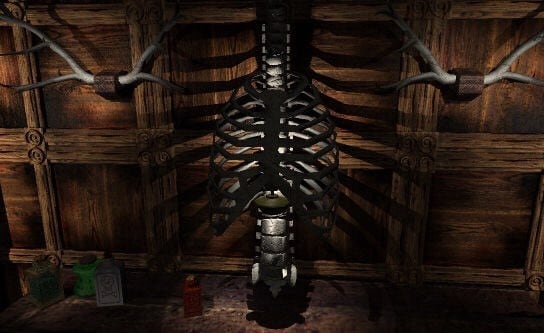
Curious about the interplay of those two titles, I asked John Romero, co-creator of Doom, Quake, and Wolfenstein 3D, how he feels about Myst and its impact on the industry. “When Myst came out, I was floored to see it unseat Wolfenstein 3D from the top of the Usenet 100 weekly list,” he says. “We couldn’t believe that a game with static screens was actually so popular, and ignored most of the conventions of adventure games of the era.”
Romero strikes an understanding tone on the appeal of the game. “There is a huge market for players who like to go on an adventure and read a good story, so there is definitely a place for those kinds of games. But we looked at Doom as the beginning of a new era of action gaming that was super exciting.”
Lost in the usual criticism of Myst as a genre killer is the fact that success in business is not usually a zero-sum game. One company can “win” a sales race while second place still does astonishingly well. Myst may have been #1 on the charts for a while in the late 1990s, but radically different #2 sellers like Quake still sold in phenomenal quantities. And while LucasArts-style games may have fallen by the wayside for a time, it wasn’t the death of the adventure genre.
In fact, if you squinted the right way, you could see that adventure games had survived, even if they had changed form. As Romero points out, “CSI, Nancy Drew, and all of the murder mystery types of adventure games kept the genre alive for a long time. Now you can see hidden-object games as expanding the realm of the adventure.”
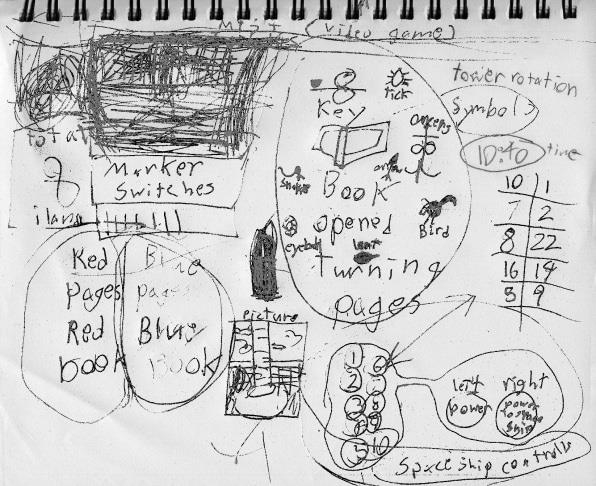
[Image: Courtesy of Benj Edwards]
In Myst’s heyday, the concept of “casual games” had not yet solidified, but now it’s okay to make games that take it easy. We’re used to a world with bajillion-sellers like Bejeweled, one-finger smartphone and tablet games that we digest at our own pace, and quieter adventure experiences like Gone Home and Dear Esther–games that put the pot on simmer rather than full boil. What if Myst was, in fact, the world’s first breakout causal game? The first adventure roasted in a slow-cooker?
“Maybe that’s the key to the stunning success behind Myst,” reflects Cordes. “It came up with the winning formula of casual and then mobile games… in 1993.”
You could say that Myst was ahead of its time, but more than that, it created its time, giving birth to the idea that it can be fun to play games at your own pace. Casual or otherwise, for my kids, it doesn’t matter what you call it. 25 years later, Myst is still a compelling treat for the senses–even in the middle of a hurricane.
(30)


